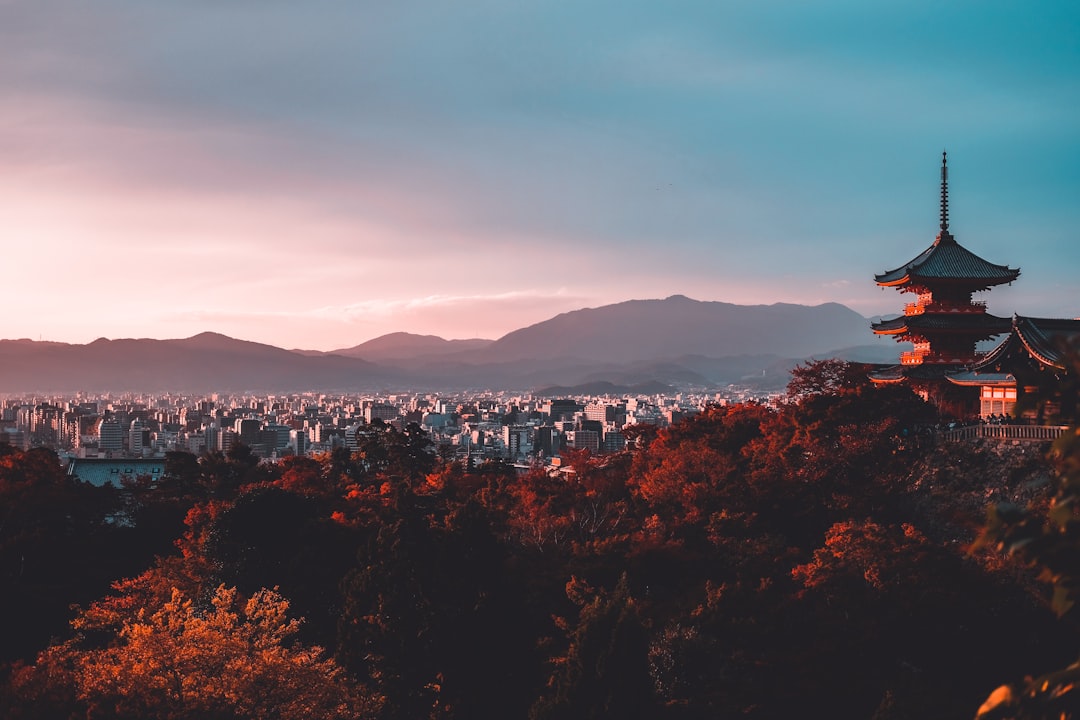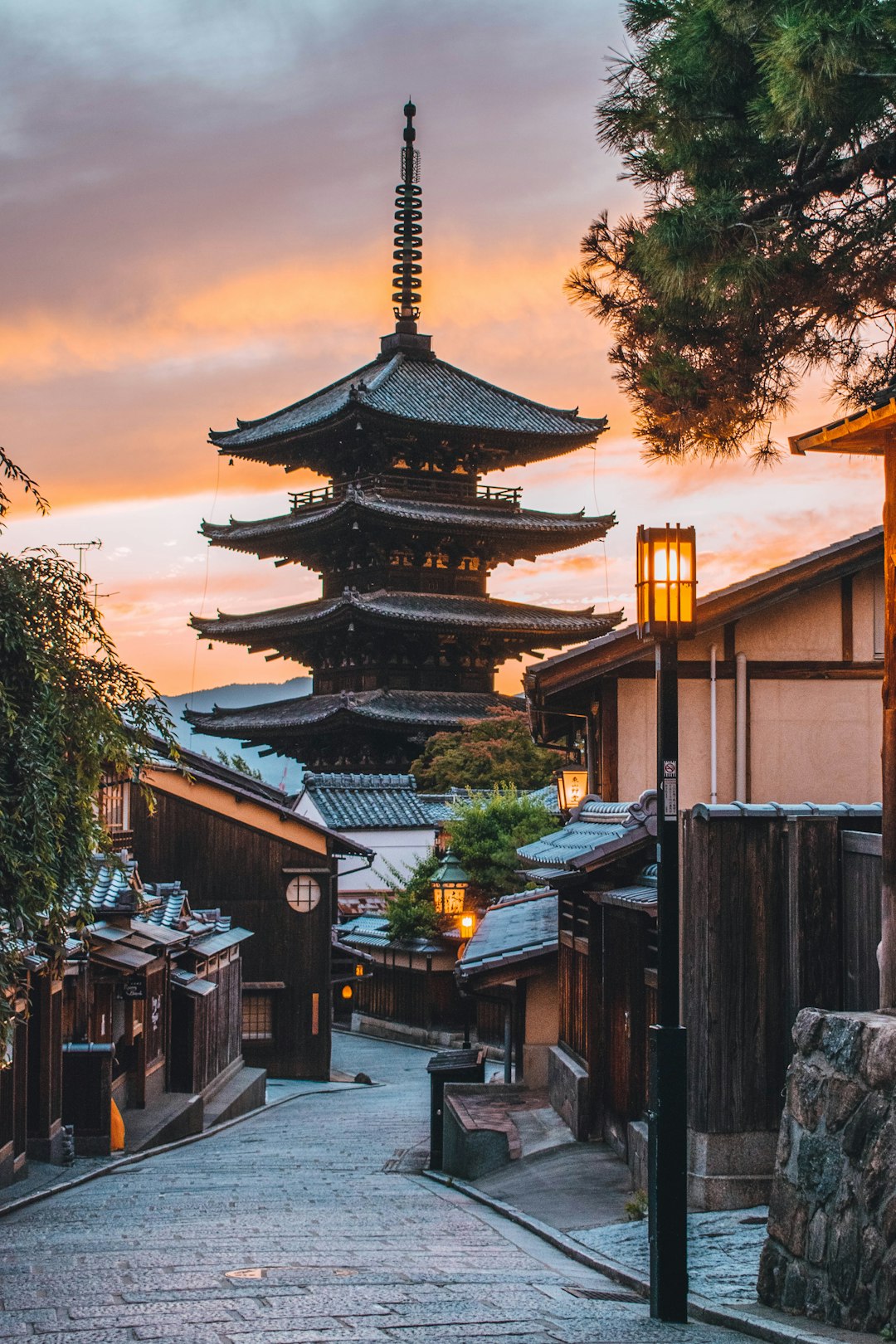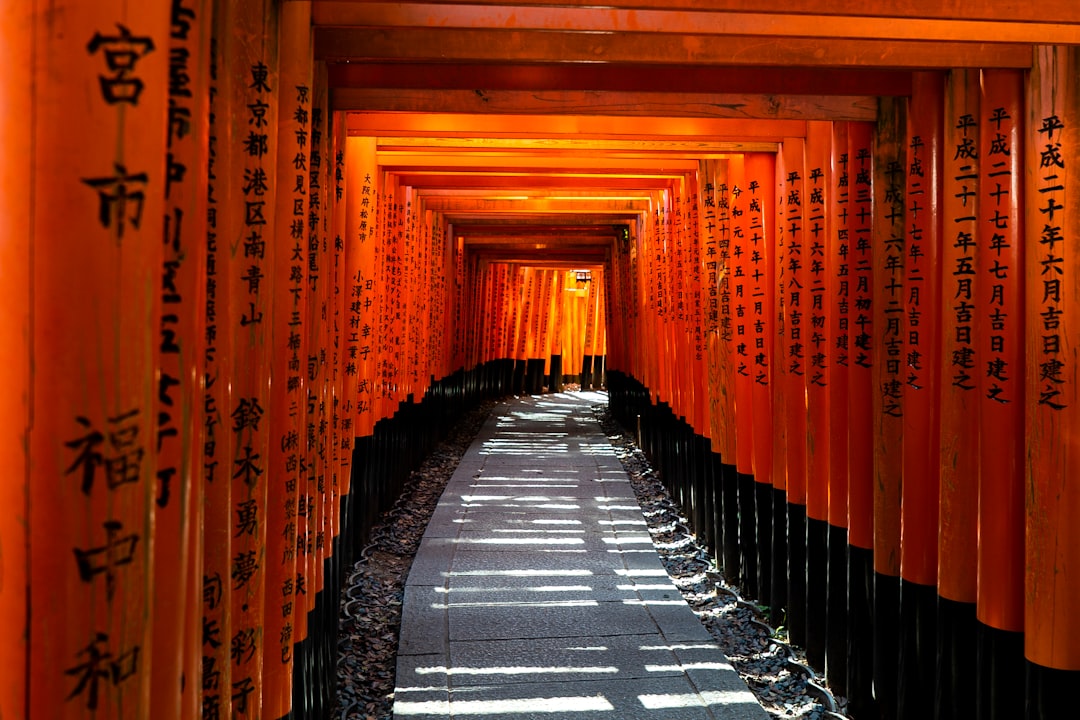
Nestled amidst the bustling energy of contemporary Japan lies the quintessential picture of tradition — Kyoto. As a cornerstone of Japanese culture, this city offers a tapestry of experiences that draw travelers into its charming embrace. Crafting the ultimate Kyoto Travel Guide requires a delicate balance of practical advice and poetic narratives to embody the unique allure that Kyoto provides. Whether you’re planning to marvel at the tranquil beauty of its historic temples, delve into the intricacies of tea ceremonies or navigate through the sublime gardens, this guide promises to equip you with everything you need to discover the enchanting soul of Kyoto. Join us as we unravel the secrets of Japan’s heart of tradition, promising an unforgettable journey through time and culture.
Embarking on the Kyoto Journey: When to Visit and What to Expect
Planning a trip to Kyoto, the cultural capital of Japan, requires a good understanding of the best times to visit and what to expect upon arrival. Your Kyoto Travel Guide starts here, with essential insights for an unforgettable journey.
When to Visit Kyoto
Spring (March to May):
- Cherry Blossom Season: Peak bloom typically occurs in early April.
- Weather: Mild temperatures, making it perfect for outdoor activities.
Autumn (September to November):
- Fall Foliage: Vibrant red and golden leaves blanket the city, especially beautiful in temples and gardens.
- Climate: Cool and comfortable for exploring.
Summer (June to August):
- Festivals: Witness traditional events like Gion Matsuri in July.
- Climate: Hot and humid, with occasional rainfall.
Winter (December to February):
- New Year Celebrations: Experience Hatsumode, the first shrine visit of the year.
- Weather: Cold, sometimes with snow, with fewer tourists around.
What to Expect in Kyoto
Upon arrival, prepare to step into a world where ancient traditions coexist with modern life. The charm of Kyoto lies in its:
- Temples and Shrines: Over 2,000 historic sites, from the golden Kinkaku-ji to the tranquil Ryoan-ji.
- Cultural Activities: Partake in a tea ceremony, or catch a glimpse of a geisha in Gion.
- Culinary Experiences: Delight in dishes like kaiseki ryori and matcha sweets.
- Natural Beauty: Meander through serene bamboo groves and manicured gardens.
Remember, your journey in Kyoto goes beyond sightseeing. It’s an opportunity to immerse yourself in the rhythm of Japanese life and the spirit of wabi-sabi, the beauty in simplicity. With this Kyoto Travel Guide snippet, start picturing your adventure through this city of Zen and history.

Exploring the Historical Wonders of Kyoto’s Temples and Shrines
As any reputable Kyoto Travel Guide would aver, a visit to Kyoto is fundamentally incomplete without exploring the wealth of temples and shrines nestled in its verdant landscape. These sites are not only architectural marvels but also gateways into the spiritual and historical heart of Japan.
To truly appreciate their beauty and significance, consider these iconic locations:
- Kinkaku-ji (The Golden Pavilion): With its top two floors completely covered in gold leaf, this Zen temple is one of Kyoto’s most famous and a must-see attraction.
- Fushimi Inari-Taisha: Known for its stunning vermilion torii gates, which trail up the mountain, this Shinto shrine draws visitors eager to walk through the seemingly endless corridors.
- Kiyomizu-dera: Perched on the side of a hill and supported by tall wooden columns, this temple offers a breathtaking view of the city, especially during cherry blossom season or autumn.
Here’s a quick comparison of these three:
| Feature | Kinkaku-ji | Fushimi Inari-Taisha | Kiyomizu-dera |
|---|---|---|---|
| Main Attraction | Gold-covered Pavilions | Torii Gate Pathways | Hillside View & Wooden Stage |
| UNESCO Status | World Heritage Site | Not listed | World Heritage Site |
| Ideal Visit Time | Morning for Reflection | Anytime for a Hike | Evening for Sunset Views |
| Cultural Significance | Zen Buddhism Icon | Dedicated to Inari, Shinto God of Rice | Associated with the Waterfall & Pure Water |
When drafting your Kyoto Travel Guide itinerary, allocate ample time to wander through these historical sites, perhaps finding a moment of zen or simply marveling at the craftsmanship and dedication that have preserved these structures for centuries. Accessibility is also key, with well-marked signages in English and guided tours often available to enhance your understanding and appreciation of each site.
Moreover, remember to respect the customs and traditions that come with visiting these sacred spaces – such as removing shoes where required and avoiding loud noises.
Culminating your journey through Kyoto’s temples and shrines will surely leave you with a profound sense of wonder at the city’s enduring connection to its past. Embracing the tranquility and beauty here is essential to experiencing the true essence of Kyoto.
Navigating Kyoto: Public Transportation and Walking the Streets
Getting around Kyoto is an integral part of your travel experience, and understanding your options can enhance your journey. Our Kyoto Travel Guide provides insight into the efficient public transportation system and the charm of exploring the city on foot.
Public Transportation:
Kyoto’s network includes trains, subways, and buses that can take you near most tourist attractions. Here’s how to utilize these options effectively:
- Trains: The JR lines are handy for reaching destinations like Fushimi Inari Shrine and Arashiyama Bamboo Forest. Consider a Japan Rail Pass if you plan to travel beyond Kyoto.
- Subways: Offering two main lines, the Karasuma and Tozai, the subway is an easy way to navigate the city. Stations are well-signposted in English.
- Buses: Buses are the most extensive public transport method, reaching corners of Kyoto not easily accessible by train. A one-day bus pass often pays off if you’re visiting multiple sites.
Additionally, IC cards such as Suica or Icoca can be used across Kyoto’s public transport for a seamless experience. These rechargeable cards eliminate the need for individual tickets each ride.
Walking the Streets:
On the other hand, walking in Kyoto is not just exercise, but a historical tour in its own right. The city’s grid layout is walker-friendly, and strolling the streets can reveal hidden temples, traditional shops, and picturesque neighborhoods. Key areas like the Gion district, with its old-world ambiance and occasional geisha sightings, are best explored on foot. Just be prepared with comfortable footwear and a map.
Comparison Table: Public Transport vs. Walking
| Transport Method | Pros | Cons |
|---|---|---|
| Public Transport | – Fast and reliable – Covers long distances quickly – Affordable with day passes |
– Can be crowded – Less scenic |
| Walking | – Scenic and immersive – Discover hidden gems – Healthy and eco-friendly |
– Time-consuming – Weather dependent |
Remember, part of the beauty of Kyoto lies in the journey itself, whether by modern transit or the timeless rhythm of your own steps. Our Kyoto Travel Guide emphasizes the importance of balancing both to truly appreciate the city’s depth and charm.
Cultural Immersion: Experiencing Tea Ceremonies and Geisha Performances
A quintessential part of any Kyoto travel guide is the alluring cultural immersion one can experience through traditional tea ceremonies and Geisha performances. No visit to this city is complete without taking part in these deeply historic and exquisite customs.
Tea Ceremonies: Sado (The Way of Tea)
- Intimacy & Tradition: Participate in an intimate ceremony centered around the serving and receiving of matcha, a finely ground, powdered green tea. These ceremonies are not just about drinking tea, but embody a ritual that brings tranquility and harmony.
- Lessons in Etiquette: Learn the decorum associated with Sado, such as how to correctly fold and handle the napkin, and the proper technique of sipping tea.
Geisha Performances: The Heart of Kyoto’s Entertainment
- Witness Elegance: See Geisha and Maiko (apprentices) in their elaborate kimonos, singing, dancing, and playing traditional Japanese instruments. These performances offer an insight into Japan’s rich cultural heritage.
- Exclusive Access: Explore options for private dinners or shows, where you can meet and interact with a Geisha, making for an unforgettable experience.
To best appreciate these cultural spectacles, it’s advisable to:
- Book in Advance: Place reservations early, as tea houses and Geisha performances often fill up quickly.
- Dress Respectfully: When attending these functions, consider dressing in a modest manner out of respect for the tradition and practitioners.
A visit here is a sensorial and educational journey, and by incorporating these experiences into your Kyoto travel guide itinerary, you ensure a deep connection with Japan’s heart of tradition. Remember to immerse yourself fully, with respect and openness, to truly appreciate the beauty and craftsmanship of these cultural treasures.

A Foodie’s Paradise: Sampling Kyoto’s Culinary Delights
When considering the essential experiences in any Kyoto travel guide, the local cuisine stands out as a not-to-be-missed aspect. Kyoto is indeed a foodie’s paradise, offering a unique blend of traditional and contemporary Japanese flavors. Here’s a glimpse into the gastronomic delights that await you:
- Kaiseki Ryori: This traditional multi-course meal is an art form, reflecting the seasonality and finesse of Japanese cuisine. Often served in ryokans and upscale restaurants, each dish is a feast for both the eyes and the palate.
- Tofu Specialties: Kyoto is renowned for its high-quality tofu, soft and delicate, with a rich, creamy taste. Be sure to try ‘Yudofu’, a simple hot pot dish that lets you savor tofu in its purest form.
- Matcha Flavored Treats: As the birthplace of Japanese tea ceremony, Kyoto boasts a variety of sweets infused with matcha, the finely ground green tea powder. From matcha ice cream to traditional wagashi, these treats are a must-try.
- Street Food Exploration: Stroll through the Nishiki Market, often referred to as “Kyoto’s Kitchen,” to try an array of street food, like skewered octopus with quail egg or freshly made senbei (rice crackers).
When planning your culinary journey, here are a few notable eateries to consider:
| Restaurant | Specialty | Ambiance |
|---|---|---|
| Gion Karyo | Kaiseki | Traditional |
| Tofu House Ukai | Tofu Dishes | Zen Garden Views |
| Tsujiri | Matcha Desserts | Casual |
| Nishiki Market Stalls | Assorted Street Food | Bustling Market |
Remember, the key to enjoying Kyoto’s food scene is to indulge in both the high-end experiences and casual local eats. This approach not only diversifies your taste but also gives you a comprehensive glimpse into the city’s rich culinary landscape.
Incorporating a few of these gastronomic stops into your Kyoto travel guide will ensure that your visit is as delectable as it is memorable. Indulge in the food culture of Kyoto, and you’ll quickly find out why the city is lauded for more than just its historical landmarks.
Staying in Style: Accommodation Options from Ryokans to Modern Hotels
When piecing together your Kyoto travel guide, it’s essential to consider where you’ll be resting after days filled with exploration. Kyoto offers a rich array of accommodation options, each providing a different experience that can enhance your visit to this historical city.
From traditional to contemporary, Kyoto’s hospitality scene is as diverse as its culture. Here’s a brief rundown of what to expect:
Traditional Ryokans:
- Authenticity: Experience Japanese culture at its finest by staying in a ryokan, a traditional Japanese inn.
- Features: Tatami floors, futon beds, and often an onsen (hot spring bath).
- Service: Personalized attention, often including kaiseki dinners and breakfast.
Modern Hotels:
- Convenience: For those looking for familiar comforts, Kyoto’s modern hotels offer contemporary rooms equipped with the latest amenities.
- Facilities: Many have in-house restaurants, gyms, and sometimes even English-speaking staff.
- Location: Often found near major transportation hubs, perfect for those planning daily excursions.
Mix of Both:
- Some accommodations blend the traditional ryokan experience with modern hotel luxury, offering a taste of both worlds.
If you’re seeking immersion in Japanese tradition, a ryokan will certainly fulfil that desire. Conversely, if you prefer a more typical hotel experience with the convenience of modern facilities, you’ll find plenty of options in Kyoto’s city center and surrounding areas. Your Kyoto travel guide wouldn’t be complete without considering where you’ll unwind, and Kyoto’s myriad of lodgings promise to cater to every preference and budget.
Whether you choose the intimate setting of a ryokan or the plush comforts of a modern hotel, ensure that your Kyoto accommodations align with the overall experience you wish to create. After all, the beauty of Kyoto is not just in its temples and trees, but also in the warmth of its welcome.
Nature Escapes Within the City: Kyoto’s Gardens and Pathways
While Kyoto’s temples and cultural landmarks often steal the limelight, the city’s gardens and pathways offer tranquil escapes right in the heart of the city. As part of your Kyoto Travel Guide, it’s essential to highlight these serene spots where nature’s beauty is so meticulously cultivated and preserved.
Kyoto’s gardens are more than just green spaces; they are artworks, steeped in tradition and philosophy. Let’s explore a few of the many garden oases:
- Kinkaku-ji’s Reflective Paradise: The Golden Pavilion, set against the mirror-like pond, creates a stunning harmony of architecture and landscaping. The surrounding strolling gardens are perfect for contemplative walks.
- Nanzen-ji’s Zen Escapade: Here, the rock gardens encourage inner reflection amidst the raked gravel and carefully positioned stones that exemplify Zen ideals.
- Arashiyama Bamboo Grove: Venture into another realm walking the paths that cut through towering bamboo—an experience that overtakes the senses with its rustling whispers and otherworldly green hues.
Exploring these gardens is not just a visual feast but also a journey that allows you to experience the changing seasons. Each visit offers a unique display, from the delicate cherry blossoms of spring to the fiery maples of autumn.
For a more active yet equally serene experience, the Philosopher’s Path is a must-walk. This stone path follows a canal lined with hundreds of cherry trees, named after the philosopher Nishida Kitaro, who used to practice meditation while walking this route.
In the heart of Kyoto, these nature escapes provide a momentary retreat from the bustle of the city. They embody the balance of nature and culture, a fundamental aspect of the Kyoto Travel Guide that will leave visitors entranced by the peaceful beauty inherent in Japan’s ancient capital.

Shopping and Souvenirs: Best Spots to Take a Piece of Kyoto Home
When exploring the enchanting city of Kyoto, immersing yourself in the culture is a given, and what better way to preserve your memories than by bringing a part of Kyoto back home with you? Our Kyoto Travel Guide wouldn’t be complete without some insider tips on the best places to shop for authentic Japanese souvenirs.
Nishiki Market
Known as Kyoto’s kitchen, Nishiki Market is a perfect spot to shop for local delicacies and typical Japanese kitchenware. Wander the bustling aisles and discover:
- Matcha-flavored snacks
- Exquisite Kyoto pickles (tsukemono)
- Traditional Japanese knives and cooking utensils
Kiyomizu-zaka
Heading to the historic Kiyomizu-dera Temple, the pathway known as Kiyomizu-zaka is lined with charming stores offering a bevy of unique souvenirs such as:
- Ceramic pottery, a signature Kyoto craft
- Delicate Japanese fans
- Handcrafted wooden combs
Teramachi and Shinkyogoku Shopping Arcades
These two parallel shopping arcades are fantastic for their diverse array of goods. Here’s what shoppers can find:
- Quirky T-shirts with Japanese motifs
- Exquisite paper goods (washi)
- Vintage kimonos from second-hand stores
Remember, part of the joy of shopping in Kyoto is the experience itself, a leisurely stroll through history as much as a shopping spree. Always be mindful of local customs, such as being gentle with merchandise and using cash where necessary, for the ultimate shopping experience.
With each item you select, you aren’t just buying a tangible product; you’re taking home a piece of Kyoto’s soul, a memento of the city’s rich cultural tapestry. The key to truly enjoying your shopping excursion is to look for items that resonate with your personal experience in this captivating city. Happy shopping, and may your souvenirs bring the spirit of Kyoto into your home!
Travel Tips and Etiquette: Making the Most of Your Kyoto Experience
Embarking on a journey to Kyoto, the cultural epicenter of Japan, requires a blend of excitement and respectful preparation. Your Kyoto travel guide would not be complete without essential tips and etiquette to help you make the most of your experience. Whether it’s your first visit or you’re a seasoned traveler, being mindful of local customs will enrich your trip and endear you to the locals. Here are a few tips to keep in mind:
- Respect Local Customs: Kyoto is steeped in tradition, and as such, there are many customs to be aware of. For example, when entering temples or traditional homes, it is polite to remove your shoes.
- Mastering Public Behavior: In Kyoto, and Japan as a whole, decorum in public places is highly valued. Actions such as speaking loudly, eating while walking, or use of mobile phones on public transport are typically frowned upon.
- Proper Temple Etiquette: When visiting Kyoto’s temples, it is important to follow the temple etiquette:
- Bow slightly at the entrance.
- Wash your hands and mouth at the purification fountain.
- Make a small offering if you wish to pray; a coin will suffice.
- Photography with Respect: Always ask for permission before taking photos of geishas or locals in traditional attire, and be mindful of ‘no photography’ signs, especially in sacred areas.
Not only will these practices make your journey more culturally immersive, but they also demonstrate your respect for the historic city. Kyoto welcomes tourists with open arms, and by following this Kyoto travel guide, you’ll leave with a truly authentic experience stitched into your travel tapestry. Remember, a little courtesy goes a long way in building cross-cultural friendships and unforgettable memories.



